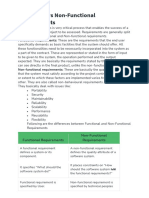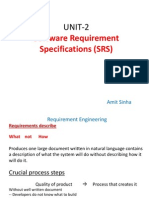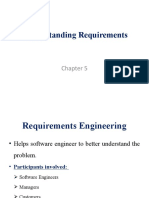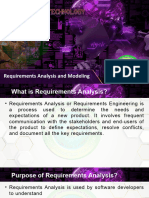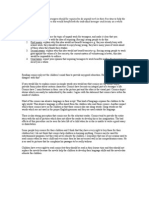0% found this document useful (0 votes)
15 views62 pagesModule 3-1
The document outlines the importance of software requirements analysis and specification for project success, detailing the requirements engineering process, which includes elicitation, analysis, documentation, and review. It emphasizes the distinction between functional and non-functional requirements, types of requirements, and the significance of feasibility studies. Additionally, it covers methods for requirements gathering, documentation standards, and project planning, including size and cost estimation techniques.
Uploaded by
arjunsbiju6Copyright
© © All Rights Reserved
We take content rights seriously. If you suspect this is your content, claim it here.
Available Formats
Download as PDF, TXT or read online on Scribd
0% found this document useful (0 votes)
15 views62 pagesModule 3-1
The document outlines the importance of software requirements analysis and specification for project success, detailing the requirements engineering process, which includes elicitation, analysis, documentation, and review. It emphasizes the distinction between functional and non-functional requirements, types of requirements, and the significance of feasibility studies. Additionally, it covers methods for requirements gathering, documentation standards, and project planning, including size and cost estimation techniques.
Uploaded by
arjunsbiju6Copyright
© © All Rights Reserved
We take content rights seriously. If you suspect this is your content, claim it here.
Available Formats
Download as PDF, TXT or read online on Scribd
/ 62
